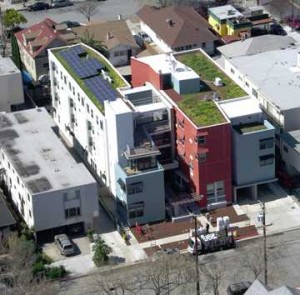 As reported recently in the Wall Street Journal, ‘Turning Consumers Green‘ the best tactic is peer pressure. From reducing plastic bag use to turning off the shower. You might ask, who’s going to pressure me in the shower. Fair enough, but this is in a locker room setting where they stated when a sign was posted to turn off the shower when soaping there was 6% compliance but if there was a plant, as in a person who they planted there to turn off water when they soaped, compliance rocketed to 47%. (Sidebar: How do they advertise this job and who applies or volunteers for that particular task.) But how does this impact you rather than reemphasizing people are sheep? Well if you can identity a trend that gains this kind of traction because of the peer pressure you don’t have to look far out into our industry before you find BIM and the emerging strength of Green BIM and rapid energy modeling. In a recent MCGraw Hill Smart Market Report, Green BIM the cited the growth of sustainable retrofits that are green will increase from 5-9% currently to 20-30% in 2014. Huge growth in energy simulation is expected in this market with the top 3 being:
As reported recently in the Wall Street Journal, ‘Turning Consumers Green‘ the best tactic is peer pressure. From reducing plastic bag use to turning off the shower. You might ask, who’s going to pressure me in the shower. Fair enough, but this is in a locker room setting where they stated when a sign was posted to turn off the shower when soaping there was 6% compliance but if there was a plant, as in a person who they planted there to turn off water when they soaped, compliance rocketed to 47%. (Sidebar: How do they advertise this job and who applies or volunteers for that particular task.) But how does this impact you rather than reemphasizing people are sheep? Well if you can identity a trend that gains this kind of traction because of the peer pressure you don’t have to look far out into our industry before you find BIM and the emerging strength of Green BIM and rapid energy modeling. In a recent MCGraw Hill Smart Market Report, Green BIM the cited the growth of sustainable retrofits that are green will increase from 5-9% currently to 20-30% in 2014. Huge growth in energy simulation is expected in this market with the top 3 being:
- Whole Building Energy Use
- Lighting and Day Lighting
- Energy Code Compliance
This type of analysis is right in BIM’s wheelhouse as seen in Revit CEA. However, one of the biggest issues still remains software integration, that is one model, many uses rather than everyone building their own model for their own uses. So look for more companies trying to either build functionality on top of existing platforms or creating translation or integration tools.
Look for Green to expand. It’s not for just Organic Folks eating Birkenstocks at their local markets as it is starting to make too much sense. For example, Casa Feliz Apartments in San Jose and as reported by Robbie Whelan in the Wall Street Journal, ‘utilized bamboo floors, linseed oil based linoleum and ergonomic chairs in the lobby made from sustainability farmed wood.’ Addtionally,
Casa Feliz is one of a growing number of affordable-housing projects nationwide that have been built “green”—that is, with nontoxic materials, highly energy-efficient appliances, and features such as green roofs and solar panels. Thanks to tax credits designed to attract private capital and aggressive cost-cutting on other construction features, affordable-housing developers are embracing eco-friendly building features that were once the purview of high-minded designers and wealthy developers with money to spare.
MetLife Inc., the big New York-based insurance company, is one of those investors. Matt Sheedy, who invests funds from MetLife’s $325 billion general account, says MetLife and other large institutional investors are eager to invest in green affordable-housing projects because they have a safer risk profile than more traditional housing projects.
So either get caught by the wave, or build your boat out of sustainable wood, hoist your hemp sail and get going. Your firm needs a Green BIM strategy.

